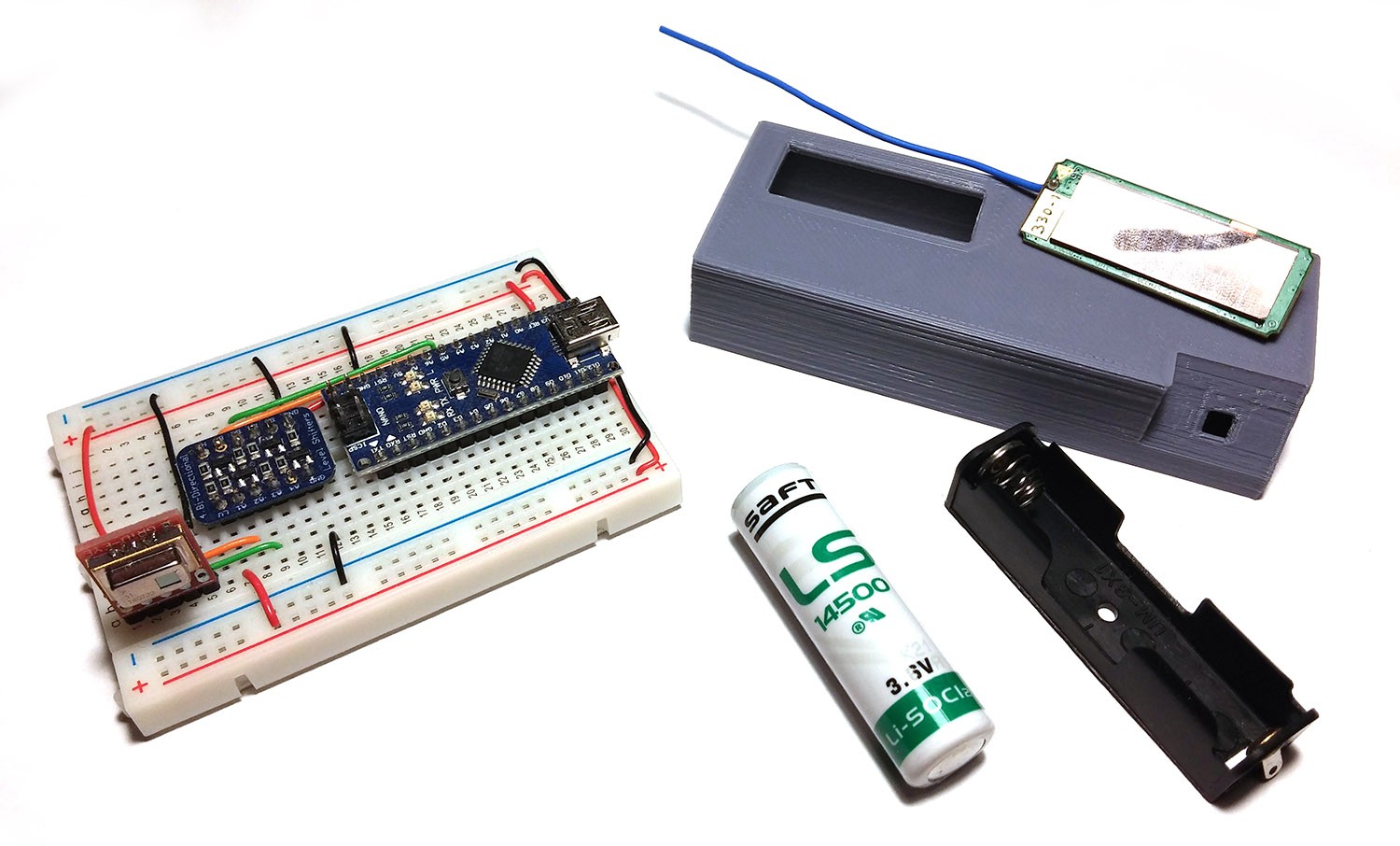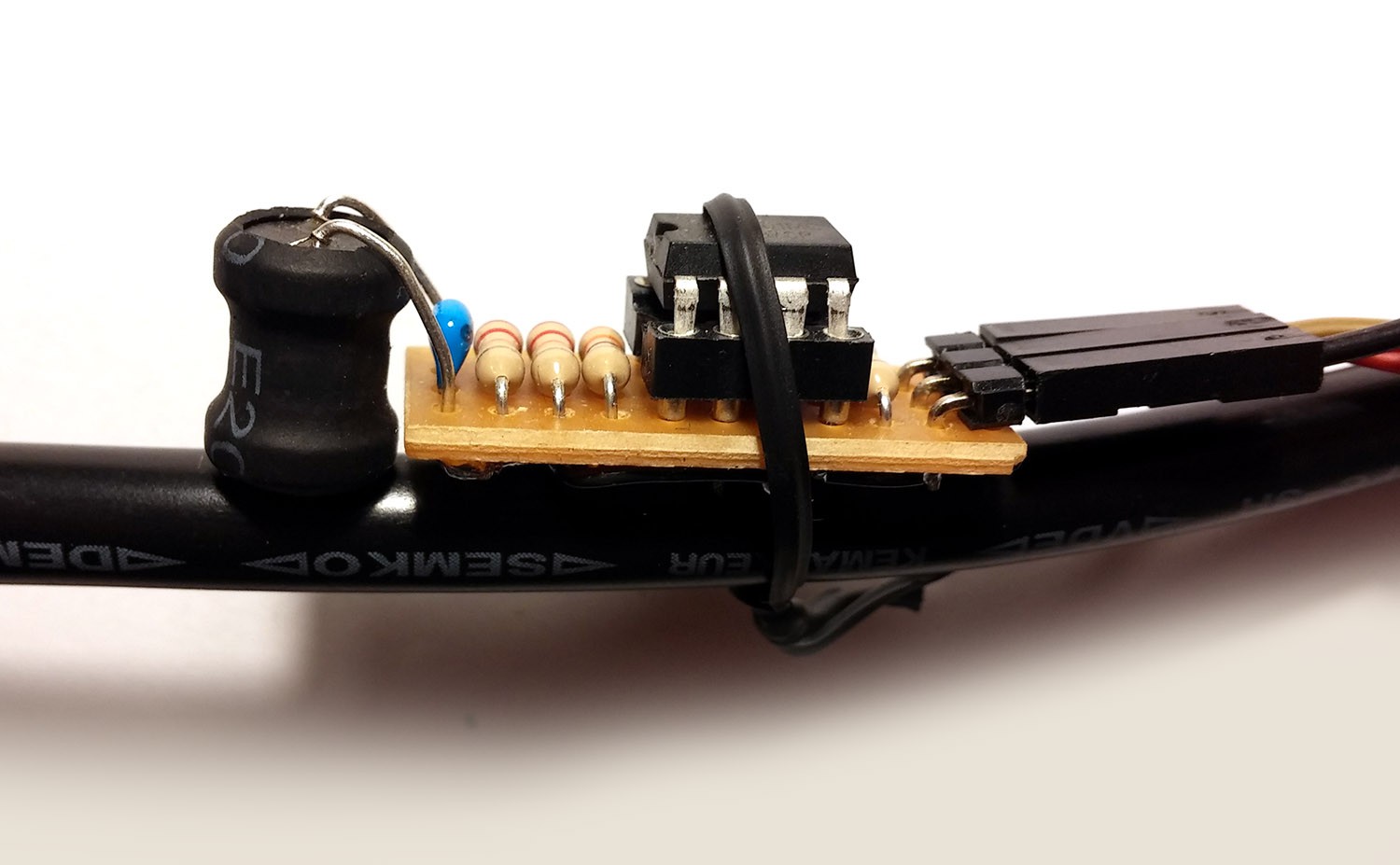The main 3 problems have been tackled, with the current detector being particularly tricky. What remains is connecting the sensors to EnOcean modules rather than an ATMega. As the firmware is very small, this will be trivial, however the big question that remains is whether all of the modules will be able to operare on battery power alone.
With the Grid-Eye module the answer is clearly no. The module consumes too much current while needing too much time to produce clear images (reading an image after the suggested wait time of 50ms after start up still produced a very noisy image). Therefore, this module will have a backup battery.

(left) The current Arduino setup. (right) A 3d printed prototype case that houses a AA-sized 3.6V Lithium battery. (The final module will likely use a smaller battery than the AA-sized one shown here)
For the current detector, a smaller form factor prototype was made which can be attached to cables more easily. Using SMD parts, the size of the circuit can be further reduced to create a module barely bigger than the STM330 module itself.

 karpour
karpour
Discussions
Become a Hackaday.io Member
Create an account to leave a comment. Already have an account? Log In.